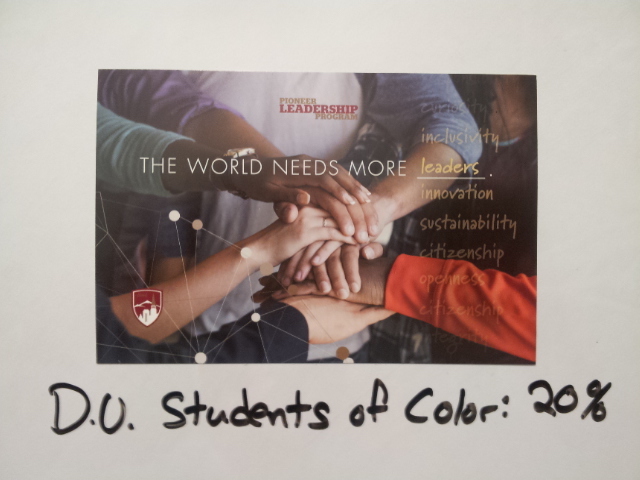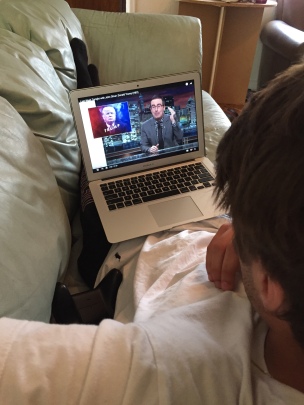It’s getting into the early hours of the morning in the library at the University of Denver. The sky is turning lighter shades of blue with each passing minute, a disconcerting sight for the many students crunching for their impending final exams. A student sits, eyes locked into his computer screen typing a million miles an hour with sweat pouring from his armpits like Niagara Falls, he as taken the illicit “study drug” adderall. This student however, does not have a prescription for this legal medicine, he has purchased it for $4 from a buddy who does.
You may think he’s alone in the pack of early morning crunchers who are under the influence of this legally prescribed amphetamine, but you’d be dead wrong. A recent University of Kentucky study found, after interviewing around 1,800 undergraduate students, a staggering 34% had used the drug illegally (without a prescription). To put it in perspective the National Institute on Drug abuse reports only 4.4% of students nationwide say they use cocaine making it the second most abused simulate behind adderall.
“Everyday I see more and more high school to college level age kids come in and tell me they have abused adderall,” said Adam Becker, a drug and alcohol educator. Becker, an employee of the Salud Family Health Center in Denver, Colorado, is shocked by the numbers he sees come in but also left in no-mans-land. The center doesn’t take the use of adderall “very seriously at all” according to Becker. Limited treatment is available since the center is more concerned with those struggling with harder stimulants like methamphetamine and ecstasy.
Given its prescription status many students don’t feel theres any dangers involved with the drug. In the UK study mentioned earlier many students felt this way about the drug, “it could not be sold to the public if it wasn’t safe. I think it is the FDA, right?, that does all that… I mean who looks to see if coke or meth is clean? Nobody,” said Robert a undergraduate student taking part in the study. He wasn’t the only one, many in the study had very similar assertions about the drug. Another student in the study Caroline said, “Adderall is safe because how it’s made. When you get it, you know that it is not made in a bathtub by a bunch of dirty druggies. You get it at Krogers (a grocery store).”
The arguments seem valid considering when you think that the students are selling it to them are prescribed to take it daily and most of these student used it for studying on occasion. Also on their side of the argument, overdosing on adderall requires an obscene amount of consumption. According to prescription-drugs.org, a lethal dose of adderall for a male 150 pounds is 1,360mg of the stuff, meanwhile the average prescription is only about 10mg. Eating 136 adderall pills is obscene and purely suicidal as is taking an extreme amount of any prescription drug.
The dangers however, may not just be of deaths but rather the effects of the drug. “Any drug that is not prescribed to you is not safe to take,” Becker says with a stern tone in his voice, “those who are prescribed are closely monitored by their doctors to make sure they aren’t overusing or the drug isn’t having any horrible side affects on the patient.” Without this guidance many students are actually using the drug excessively and beyond its designed purpose.
I sat down with a senior at the University of Denver to talk about his experiences with the drug. In order to maintain confidentiality I will only be using his first name, Randy. When asked about the first time he used the drug the answer was rather shocking, “The first time I used it was in my junior year of high school and i snorted some at a party… I later used it for study purposes but still love to party with it here and there.” Randy is not alone in this respect however, the drug has a dual effect that many love.
I spoke over the phone with a Villanova University student, a junior there named Max. Max said he discovered the drug when he was a freshman at the university and in a desperate place with his final exams fast approaching. He exclaimed, “I felt like fuckin super man… not only was I able to tackle all my work with ease but I also felt like I could solve the problems of the word.” Its that second aspect the high of the drug that makes adderall very addicting to many. Max continued, “I then started using it to party… I felt so in the zone at the party, I was talking to everyone and was feeling great about life.”
This excess use for many is where doctors and health professionals become real scared for the users health. In a comprehensive study on multiple college campus’ Matthew D. Varga discovered the drugs dark nature. The study found that students who abused adderall were 20 times more likely to use heroin or cocaine once they had built a tolerance. This isn’t the only bad news however, both the short and long term effects can be catastrophic. Short term effects include insomnia, increased heart rate, and reduced circulation. Long term they aren’t any better, it includes hallucinations, psychotic episodes, and even ultimately death. While I mentioned earlier that it takes over 1,000mg to have a medical overdose any more than 70mg for a male 150 pounds is considered dangerous by doctors. Dangerous as in can, along with other factors, induce cardiac arrest and intense mood swings.
Adderall may seem harmless to a majority of students who use it illegal but the fact of the matter is it simply isn’t true. Since abuse is self reported the actual extent of the problem is still not fully known by medical professional and it deeply concerns them. In 2006 in February alone there were 51 deaths due to the over consumption of adderall or similar drugs. That was in 2006 too the numbers of people using illegally has only increased. Since they don’t know the extent of the problem it is hard to target the exact populations for therapy and education.
There are debates about adderall in the medical world today about its actual medical benefits and many believe American doctors are overprescribing it. In anyway we must look to the root of this problem if theres any hope to one day fix it. College culture is a “work hard, play hard” atmosphere. When many students end up playing too hard they look to drugs like adderall to appease the tough demand of their parents. It’s all seems a vicious cycle and something clearly needs to be done to identify this problem on campus’ across America.







